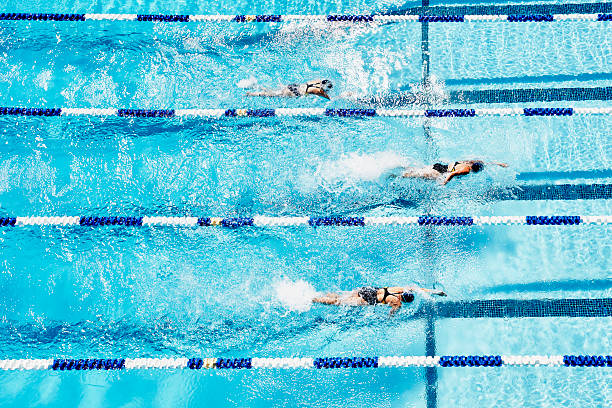Swimming and Scoliosis: What are The Benefits of Swimming?
Scoliosis is a medical condition in which a person’s spine curves sideways in either a C-shape or an S-shape. This affects approximately 3% of the population, with the majority of those affected being between the ages of ten and twenty.
Scoliosis can range from mild cases that cause only minor issues to severe cases that may necessitate bracing, surgery, or breathing difficulties. Scoliosis should not be confused with poor posture, despite the fact that it is one of the most visible symptoms of this condition.
Scoliosis patients should seek medical attention as soon as possible because the condition worsens with age. The chances of correcting the spine or at least lessening the curvature increase with early diagnosis and intervention.
Swimming and Scoliosis
Swimming can be a good general activity for people with scoliosis, but it can be harmful if it becomes competitive.
Swimming is one form of exercise that has been studied for its effects on scoliosis progression in children, according to the literature.
According to some research, removing people with scoliosis from their natural environment reduces the compressive force of gravity, which actually strengthens the body’s efforts to resist gravity.
If a person with scoliosis swims competitively and spends 4 to 6 hours a day in the pool, eliminating that feedback through unnatural body positioning can have negative consequences.
Activities that are classified as beneficial or harmful for people with scoliosis are generally classified based on the positioning of the body while participating in the activity.
This is why sports that overwork one side of the body, such as golf, figure skating, and tennis, are thought to worsen the condition by putting uneven loads on the spine.
Because the progression of scoliosis causes asymmetrical effects on the body, healthy sports and activities for people with scoliosis should counteract rather than exacerbate those effects.
Swimming Aids Breathing Problems
Swimming can be difficult for those with severe scoliosis. Scoliosis, in general, alters the shape of the torso and may put pressure on the lungs, causing difficulty breathing. Swimming may be extremely difficult at first for those with severe cases, as it may reduce their stamina while swimming. However, it will strengthen their lungs over time and teach them proper breathing techniques, which will be useful when dealing with breathing difficulties.
Swimming Body Positioning
Swimming works the muscles symmetrically, but the body’s positioning during swimming puts the spine in an unnatural position.
The main problem is that most people swim nose down, and when you swim nose down, you have to arch your spine to breathe.
We do know that any body positioning that flattens or arches the thoracic spine (middle back) isn’t good for people with scoliosis. Most people who treat scoliosis conservatively believe that this body positioning during exercise can aggravate the condition by stimulating progression.
Any activity that promotes a flatter back, such as swimming, dance, and gymnastics, increases the risk of scoliosis progression. These activities flatten the thoracic spine instead of encouraging normal kyphosis (convex curve).
Swimming involves the same type of spine-flattening movement as dance and gymnastics; the only difference is that you do it lying down.
Swimming and activities that promote a flatter spine, according to some evidence, actually stimulate progression rather than limit or prevent it in people with progressive scoliosis.
one thing we are certain of
While swimming will not cause scoliosis nor will it increase a 20-degree curve to 100 degrees, it can be a factor that adds another 5 or 10 degrees to a curvature.
The primary goal of scoliosis treatment is to structurally reduce the abnormal curvature and limit its progression. Swimming, which has been linked to stimulating scoliosis progression, should be limited and used as a general form of exercise rather than a competitive or frequent one.
Exercise as a Scoliosis Treatment
One of the many misconceptions about scoliosis is that people with the condition should not exercise. Yes, exercising can be painful for those suffering from such conditions, but with the right kind of exercise, it can actually strengthen the muscles surrounding the spine. Having said that, it can be an excellent scoliosis treatment option.
Olympians like Usain Bolt and professional athletes like Jessica Ashwood have both achieved success in sports while dealing with scoliosis. While having this condition may necessitate additional considerations and challenges, it should not limit what a person is capable of. You should consult with your physical therapist or orthopedist to see if your condition will allow you to participate in certain sports.
Conclusion
Swimming is an excellent form of exercise for almost any level of Scoliosis because it is much gentler on the spine than other high-impact sports like soccer or running. Buoyancy in water would reduce body weight and acting forces on the body, putting much less pressure on the spine. Water also provides resistance, which works the muscles in the same way that gym machines and weights do without putting pressure on the spine. Swimming strengthens the muscles on the entire back, so while it cannot specifically target the muscles around the curvature of the spine, it can help strengthen the entire back and reduce pain caused by muscle imbalance.

Swimming will eventually improve muscle endurance and flexibility, which will help those with Scoliosis in their daily physical activities outside of the pool.
While Scoliosis will make swimming more difficult, it is not a condition that will prevent a person from ever enjoying the water. Because Scoliosis changes the shape of the torso, it can put pressure on the lungs and make breathing difficult. Swimming laps may initially reduce their stamina, but the exercise will strengthen their lungs and eventually improve their stamina. Swimming also teaches proper breathing technique, which can help with some of the breathing difficulties caused by Scoliosis in everyday life.
In general, exercising or playing in the water relieves stress and tension, which aids in symptom management. Cool water improves circulation to the body’s tissues, relieving back pain caused by spinal curvature and aiding in the relief or management of chronic symptoms. Swimming is recommended for people with Scoliosis because they may find renewed energy from a consistent form of exercise. Swimming progress will also provide them with feelings of accomplishment and may encourage them to maintain a positive attitude both in and out of the pool.
